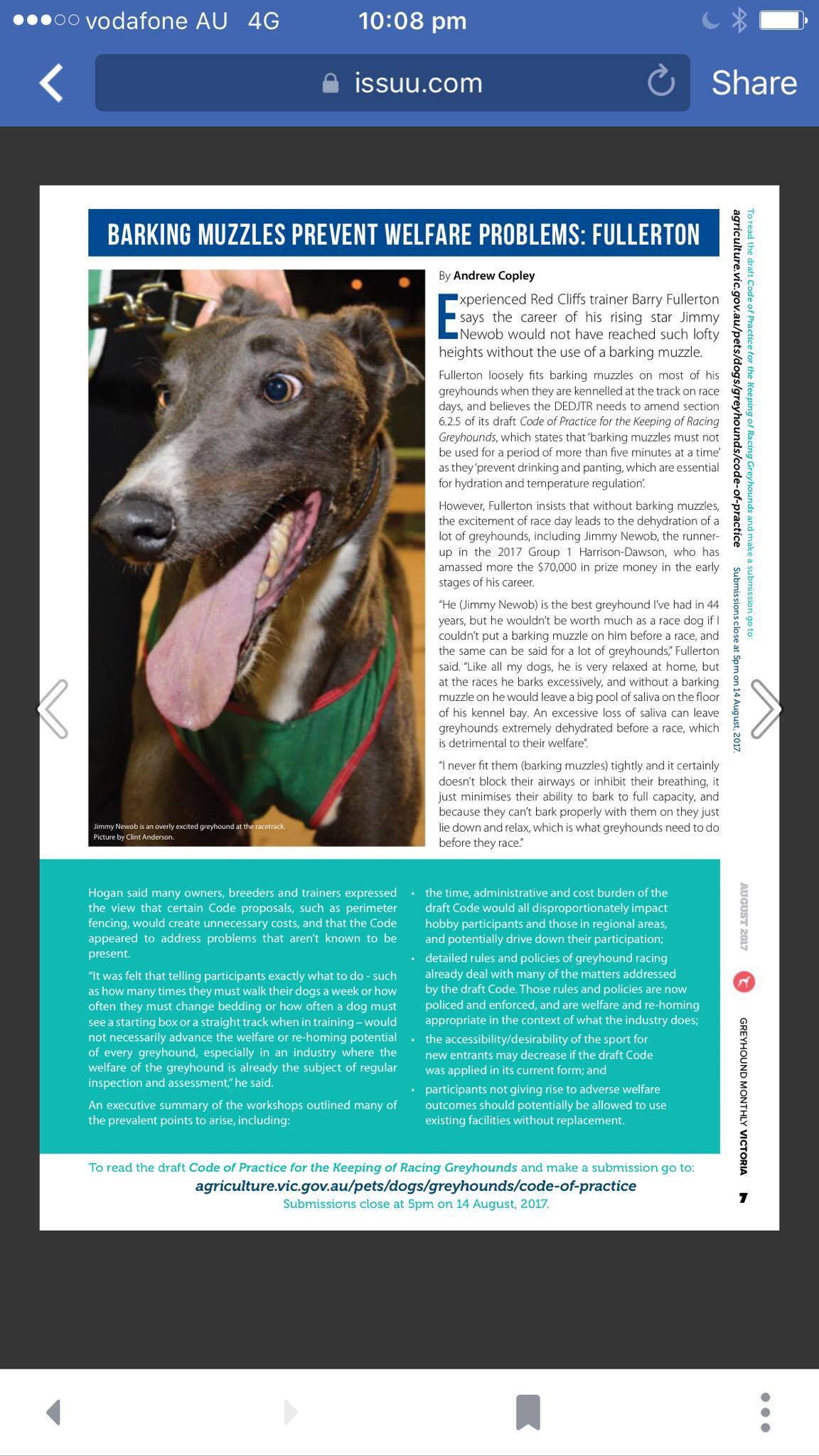One of the Coalition for the Protection of Greyhounds committee members saw the following article in GRV’s monthly magazine. The arguments are being made by Andrew Copley that barking muzzles help stop dogs from becoming dehydrated and that wearing them reduces their stress. What a load of bollocks!
If the trainers are so concerned about dehydration, why don’t they ensure that the dogs have plenty of water to drink? On the second point, if dogs are barking because they are stressed, gagging them will only stress them more.
To obtain an informed comment on this article, we asked veterinary behaviour consultant, Dr Karen Dawson BSc BVSc Hons MANZCVS (Behaviour).
Please see her comments below.

“Yes, I believe that they can be detrimental; for a number of reasons. The routine use of any device that prevents an animal from engaging in normal species specific behaviours must be questioned.
Muzzles do not address the underlying emotional state of the greyhound; the motivation for the “undesirable” behaviour. Basket muzzles may allow the dog to pant and drink but they do not permit the dog to groom or perform other calming behaviours.
Barking muzzles, in my opinion, do prevent adequate panting and thermoregulation. It is very concerning that even today, they are still considered a necessity on race day or whilst in kennels.
Race day reactivity, excessive barking or maladaptive arousal is common; that does not make it normal.
Like basket muzzles, barking muzzles do not change the underlying emotional state of the dog.
Either way, muzzles prevent behavioural freedom.
Prohibiting access to perform a behaviour does not alter the desire to perform them.
Externally the dog may seem calmer because it is not barking. Internal changes are likely to be more complex and welfare negative than external behaviours suggest. Yes, dogs do lie down and move around less when muzzled. However this may be due to inhibition, distress, frustration or even learned helplessness rather than the muzzle having a calming effect.
More studies would be required to determine the effects of barking muzzles on physiological state, cortisol levels, hydration status, and during periods of heat when the dog needs to pant. Strategies to minimise kennel stress and barking need to be further developed and implemented.
Barking muzzles remain a simple solution to a complex, poorly understood problem. They are not in keeping with the current understanding of what constitutes good welfare.”